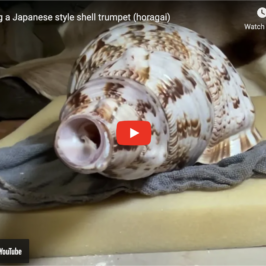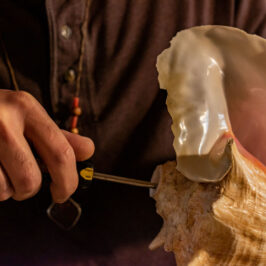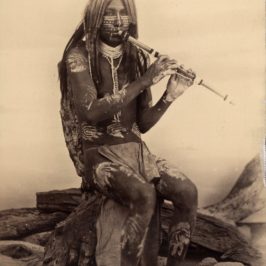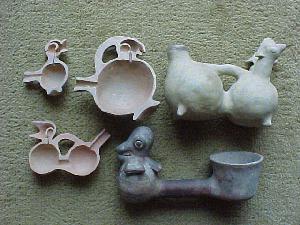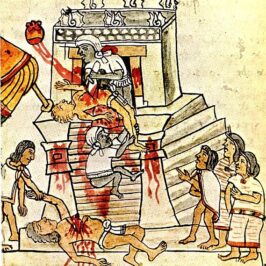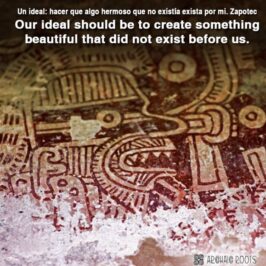Carved from wood and cloaked in the whispers of centuries, the bata drum resonates far beyond its hourglass frame. In the hands of skilled players, it becomes a voice, weaving tales of ancestry, invoking deities, and pulsating with the vibrant spirit of West African and Cuban cultures. To understand the bata is to embark on a journey through time, tradition, and the very essence of human expression.
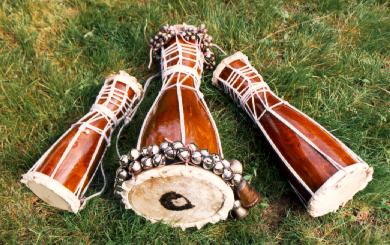
Origins Rooted in Royalty:
The bata’s story begins in the heart of Nigeria, where it emerged among the Yoruba people over 500 years ago. Traditionally crafted from the wood of the sacred oma tree, its hourglass shape housed the voices of divinity. Carved by expert hands, each drum possessed a unique personality, reflecting the skill of the artisan and the spirit imbued within.
Initially, the bata played a central role in Yoruba religious ceremonies, serving as a vessel for communicating with the gods. Kings, revered ancestors, and powerful deities each had their own dedicated bata ensemble, their distinct rhythms echoing through rituals and celebrations. The drums weren’t merely instruments; they were living entities, infused with the power to connect the physical realm with the spiritual.

Transatlantic Journey and Transformation:
The arrival of the transatlantic slave trade in the 18th and 19th centuries tragically scattered the Yoruba people across the Atlantic. Yet, their cultural treasures like the bata drum refused to be silenced. Enslaved individuals carried their traditions with them, weaving them into the fabric of new communities in the Americas.

In Cuba, the bata found a vibrant new home within the Lucumí (Santería) religion. Here, it became an integral part of religious ceremonies, honoring the Orishas, the powerful deities of the Yoruba pantheon. Each Orisha has their own designated bata ensemble, their unique rhythms conveying specific prayers, praises, and invocations.
While preserving its sacred function, the bata also began to take on secular roles in Cuba. Skilled “batá drummers” emerged, forming ensembles that performed at celebrations, festivals, and cultural events. Their virtuosity and innovative rhythms infused popular Cuban music genres like rumba and mambo, leaving an indelible mark on the nation’s soundscape.
Unveiling the Ensemble:
A traditional bata ensemble typically comprises three drums of varying sizes:
- Iyáílù (Mother): The largest and lowest-pitched drum, representing the voice of the earth and the wisdom of ancestors.
- Itótele (Middle): The medium-sized drum, embodying the human voice and serving as the bridge between the other two.
- Okónkolo (Smallest): The highest-pitched drum, symbolizing the sky and divine energy.
Each drum requires a skilled player, utilizing a combination of sticks and open hand techniques to coax forth its unique voice. The interplay between these voices creates complex polyrhythms, known as “golpes,” that carry specific meanings and evoke powerful emotions.
Masters of Rhythm and Tradition:
Becoming a bata drummer is not simply about mastering a musical instrument; it’s about embracing a cultural legacy. Training is rigorous, passed down from generation to generation through a lineage of experienced drummers. It involves not only understanding the technical aspects of playing but also internalizing the cultural and spiritual significance of each rhythm.
Initiates learn the traditional language of the bata, a system of coded phrases and rhythms expressing stories, proverbs, and even historical events. The ability to translate these messages through drumming skills elevates players to the status of cultural keepers, transmitting precious knowledge to future generations.
Modern Adaptations and Enduring Spirit:
Today, the bata drum resonates beyond its traditional settings. Artists across the globe incorporate its rich sounds into diverse musical genres, pushing the boundaries of its expression. Educational institutions offer workshops and training programs, ensuring the continuation of this vibrant tradition.
Despite facing challenges like cultural appropriation and the struggle to preserve sacred knowledge, the bata drum continues to be a powerful symbol of resilience and cultural identity. Its deep-rooted connection to history, spirituality, and community ensures its legacy will echo through generations to come.
Further Exploration:
- Explore recordings of traditional bata drumming ceremonies and contemporary adaptations.
- Learn about the specific rhythms associated with different Orishas.
- Consider attending a workshop or lecture on the history and cultural significance of the bata drum.
- Support organizations dedicated to preserving and promoting Afro-Cuban and Yoruba cultural traditions.
By actively engaging with the bata drum, we can celebrate its vibrant past, honor its cultural significance, and ensure its powerful pulse continues to resonate for generations to come.

